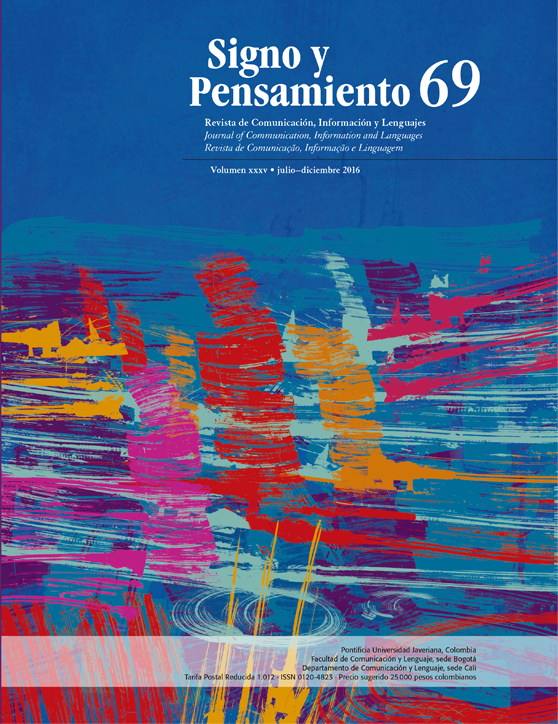Resumo
Os estudantes de inglês têm dificuldades na hora de se enfrentar com textos autênticos em inglês porque, na verdade, eles aprendem tal língua com textos comunicativos adaptados aos seus níveis de linguagem. Portanto, este estudo de caso analisou como foi que um grupo de estudantes de inglês implementaram estratégias de aprendizagem para ler textos literários autênticos pela primeira vez nas suas vidas.
Os dados coletados por meio de questionários, diários dos alunos e notas de campo indicaram que os discentes estavam cientes do seu progresso nas habilidades da compreensão escrita (leitura) com a ajuda de tais estratégias. Os resultados mostram que foram usadas principalmente quatro estratégias de aprendizagem: associações mentais, resumos ou sublinhado, traduções e análise de informações.
Os participantes também reconheceram os benefícios das estratégias de aprendizagem durante sua interação com os textos autênticos, enfatizando a autoregulação, autonomia e responsabilidade para ler com um propósito.
Allwright, R. (1979). Language learning through communication practice. In C. J. Brumfit and K. Johnson (Eds.). The Communicative Approach to Language Teaching (pp. 167-82). Oxford: Oxford University Press.
Amer, A. (2003). Teaching EFL/ESL Literature. The Reading Matrix, 2(3), 238-245. Berardo, S. (2006). The use of authentic materials in the teaching of reading. The Reading Matrix, 6(2), 60-69.
Brumfit, C., and Carter, R. (1986). Literature and Language Teaching. Cambridge: Cambridge UP.
Carter, R., & McRae, J. (Eds.) (1996). Language, Literature, and the Learner. London: Longman.
Chamot, A, Barhardt, S., El-dinary, P, and Robbins, J. (1999). The Learning Strategies Handbook. New York: Longman.
Chamot, A. U. (2005). The Cognitive Academic Language Learning Approach (CALLA): An Update. In P.A. Richard-Amato, & M.A. Snow (Eds.), Academic Success for English Language Learners: Strategies for K-12 Mainstream Teachers (pp. 87-101). White Plains, NY: Longman.
Crossley, S, Louwerse, M., McCarthy, P., McNamara, D. (2007). A Linguistic Analysis of Simplified and Authentic Texts. The Modern Language Journal, 91, 15-30. doi: 10.1111/j.1540-4781.2007.00507.x
Freeman, L. (1998). Doing Teacher-Research: From Inquiry to Understanding. Boston: Heinle & Heinle.
Freeman, D., and S. Holden. (1986). Authentic Listening Materials. In S. Holden (ed.), Techniques of Teaching (pp. 67-9). London: Modern English Publications.
Karimian, Z., and Branch, S. (2013). Students’ Use of Translation as a Learning Strategy in EFL Classroom. Journal of Language Teaching and Research, 4(3), 605-610. doi:10.4304/ jltr.4.3.605-610. doi:10.4304/jltr.4.3.605-610
Koshy, V. (2005). What is Action Research? Action Research for Improving Practice. London: Paul Chapman Publishing.
Little, B. L., S. Devitt, & D. Singleton (1989). Learning Foreign Languages from Authentic Texts. Dublin: Authentic Language Learning Resources Ltd.
Long, M., and Ross, S. (1994). The Effects of Simplified and Elaborated Texts on Foreign Language Reading Comprehension. Language Learning, A Journal of Research in Language Studies, 44(2), 189-219. doi: 10.1111/j.1467- 1770.1994.tb01100.x
Gómez Rodríguez, L. (2014). Relational Teaching: A Way to Foster EFL Learners’ Intercultural Communicative Competence Through Literary Short Stories. Colombian Applied Linguistics Journal, 16(2), 135-150. doi: http://dx.doi.org/10.14483/udistrital.jour. calj.2014.2.a01
McGrath, I. (2002). Materials Evaluation and Design for Language Teaching. Edinburgh: Edinburgh University Press.
McKay, S. (2001). Literature as Content for ESL/ EFL. In M. Murcia (Ed.), Teaching English as a Second/Foreign Language (pp. 319-331). Boston, MA: Heinle & Heinle.
Mishan, F. (2005). Designing Authenticity into Language Learning Materials. Bristol: Intellect.
O’Malley, J. M., and Chamot, A. U. (1990). Learning Strategies in Second Language Acquisition. New York: Cambridge University Press.
O’Neil, R. O. (1982). Why use Textbooks? ELT Journal, 36(2), 104-111. doi: 10.1093/elt/36.2.104.
Oxford, R. (1989). Use of Language Learning Strategies: A Synthesis with Studies with Implications for Strategy Training. System, 17, 235-247. doi: 10.1016/0346-251X(89)90036-5
Oxford, R. (1990). Language Learning Strategies: What Every Teacher Should Know. New York: Newbury House.
Oxford, R. (2001). Language Learning Styles and Strategies. In M. Murcia (Ed.), Teaching English as a Second/Foreign Language (pp. 359-366). Boston, MA: Heinle & Heinle.
Patton, M. (2002). Qualitative Research and Evaluation Methods (3rd ed.). California: Sage Publications, Inc.
Peacock, M. (1997). The Effect of Authentic Materials on the Motivation of EFL Learners. ELT Journal, 51(2), 144-156. doi: 10.1093/ elt/51.2.144
Scarcella, R., and Oxford, R. (1992). The Tapestry of Language Learning: The Individual in the Communicative Classroom. Boston, MA: Heinle & Heinle. Sheldon, L. (1988). Evaluation ELT Text Books and Materials. ELT Journal, 42(4), 237-246. doi: 10.1093/elt/42.4.237
Richards, J., & Rodgers, T. (2006). Approaches and Methods in Language Teaching. Cambridge University Press.
Scarcella, R., & Oxford, R. (1992). The Tapestry of Language Learning: The Individual in the Communicative Classroom. Boston: Heinle & Heinle.
Stryker, S., & Leaver, B. (1997). Content-Based Instruction in Foreign Language Education: Models And Methods. Washington: Georgetown University Press.
Tamo D. (2009). The Use of Authentic Materials in Classrooms. LCPJ, 2(1), 74-78. Tomlinson, B. (2012). Materials Development for Language Learning and Teaching. Language Teaching, 45(2), 143-179. doi.org/10.1017/ S0261444811000528.
Tomlinson, B., & H. Masuhara (Eds.) (2010). Research for Materials Development in Language Learning: Evidence for Best Practice. London: Continuum.
Trabelsi, S. (2010). Developing and Trialing Authentic Materials for Business English Students at a Tunisian University. In B. Tomlinson, & H. Masuhara (Eds.), Research for Materials Development in Language Learning: Evidence for Best Practice (pp. 103-120). London: Continuum.
Wallace, M. J. (2006). Action Research for Language Teachers. Cambridge: Cambridge University Press.
Williams, M., & Burden, R. (1997). Psychology for Language Teachers. Cambridge: Cambridge University Press.
Esta revista científica está registrada sob a licença Creative Commons Attribution 4.0 International. Portanto, este trabalho pode ser reproduzido, distribuído e comunicado publicamente em formato digital, desde que os nomes dos autores e da Pontificia Universidad Javeriana sejam mencionados. Você pode citar, adaptar, transformar, auto-arquivar, republicar e desenvolver o material, para qualquer finalidade (inclusive comercial), desde que reconheça adequadamente a autoria, forneça um link para o trabalho original e indique se foram feitas alterações. A Pontificia Universidad Javeriana não retém os direitos sobre os trabalhos publicados e o conteúdo é de responsabilidade exclusiva dos autores, que mantêm seus direitos morais, intelectuais, de privacidade e publicidade.



